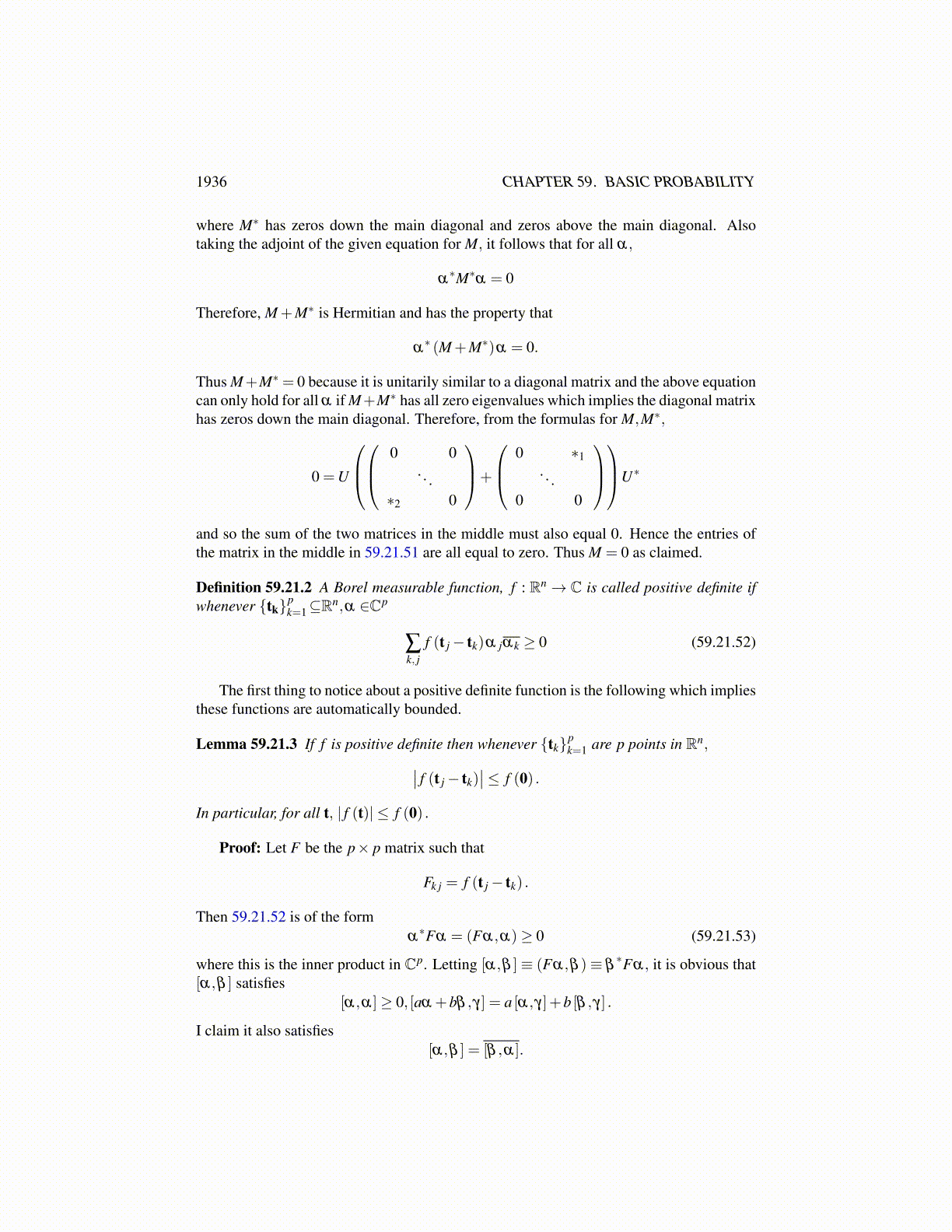
1936 CHAPTER 59. BASIC PROBABILITY
There is an interesting corollary to this theorem.
Corollary 59.20.3 Let H be a real Hilbert space. There exist random variables W (h) forh ∈H such that each is normally distributed with mean 0 and for every h,g,(W (h) ,W (g))is normally distributed and
E (W (h)W (g)) = (h,g)H
Furthermore, if {ei} is an orthogonal set of vectors of H, then {W (ei)} are independentrandom variables. Also for any finite set { f1, f2, · · · , fn},
(W ( f1) ,W ( f2) , · · · ,W ( fn))
is normally distributed.
Proof: Let µh1···hmbe a multivariate normal distribution with covariance Σi j = (hi,h j)
and mean 0. Thus the characteristic function of this measure is
e−12 t∗Σt
Now suppose µk1···knis another such measure where for simplicity,
{h1 · · ·hm,km+1 · · ·kn}= {k1 · · ·kn}
Let ν be a measure on B (Rm) which is given by
ν (E)≡ µk1···kn
(E×Rn−m)
Then does it follow that ν = µh1···hm? If so, then the Kolmogorov consistency condition will
hold for these measures µh1···hm. To determine whether this is so, take the characteristic
function of ν . Let Σ1 be the n×n matrix which comes from the {k1 · · ·kn} and let Σ2 be theone which comes from the {h1 · · ·hm}.∫
Rmeit·xdν (x) ≡
∫Rn−m
∫Rm
ei(t,0)·(x,y)dµk1···kn(x,y)
= e−12 (t∗,0∗)Σ1(t,0) = e−
12 t∗Σ2t
which is the characteristic function for µh1···hm. Therefore, these two measures are the same
and the Kolmogorov consistency condition holds. It follows that there exists a measure µ
defined on the Borel sets of ∏h∈HR which extends all of these measures. This argumentalso shows that if a random vector X has characteristic function e−
12 t∗Σt, then if Xk is one
of its components, then the characteristic function of Xk is e−12 t2|hk|2so this scalar valued
random variable has mean zero and variance |hk|2. Then if ω ∈∏h∈HR
W (h)(ω)≡ πh (ω)
where πh denotes the projection onto position h in this product. Also define
(W ( f1) ,W ( f2) , · · · ,W ( fn))≡ π f1··· fn (ω)